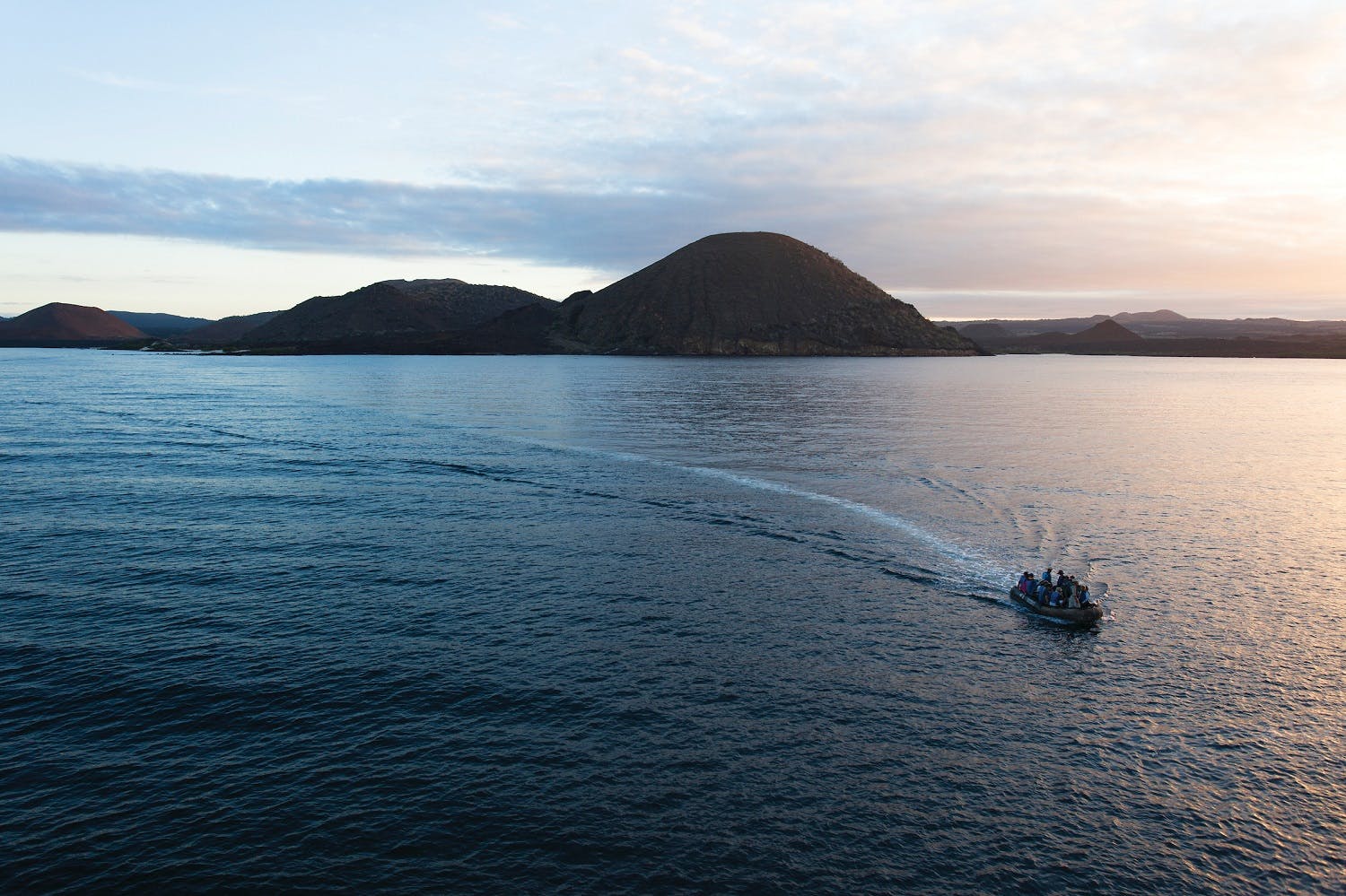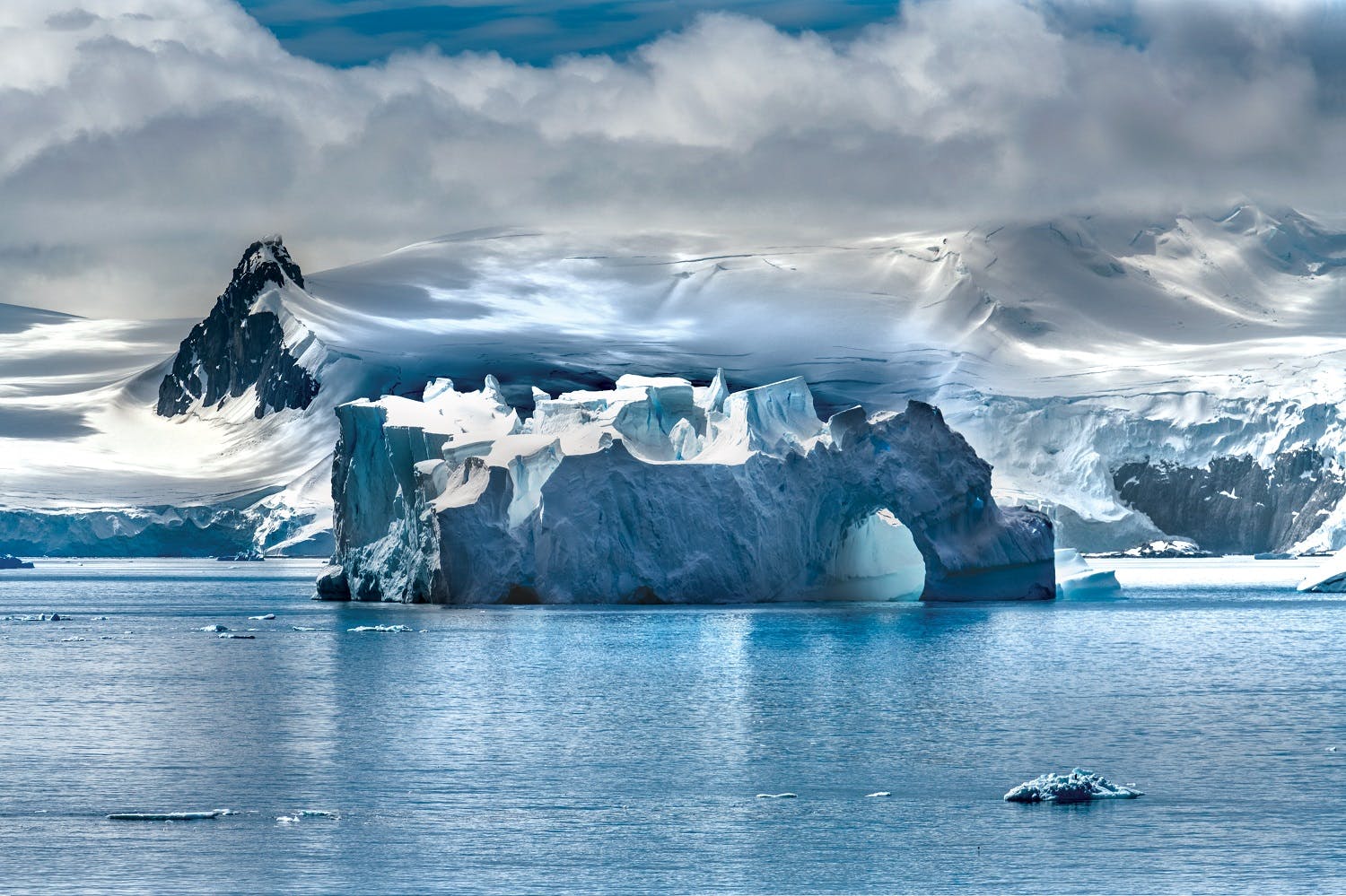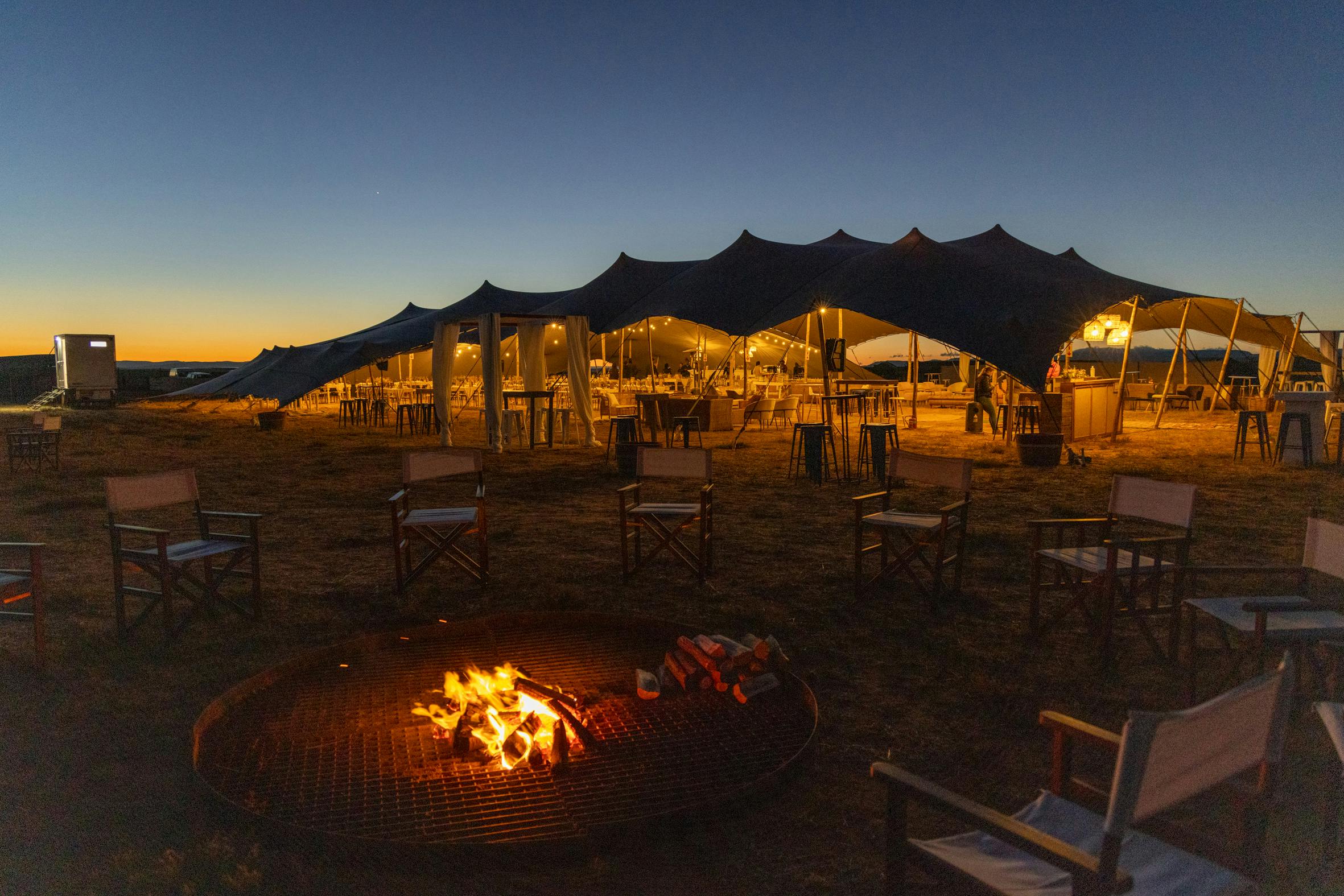How to Choose Your Cruise: Galápagos Island Vacations
For many travelers, Galápagos Island vacations embody the ultimate in expedition travel. Inspired by Charles Darwin’s legendary voyage aboard the HMS Beagle in 1835, iconic photographer Steve McCurry described his Galápagos trip as “a childhood dream that came true.”
And when one steps ashore on these 13 prehistoric islands of volcanic origin — which offer a safe refuge to approximately 9,000 known species of flora and fauna, including species that boast vibrant blue feet, vivid red shells, golden scales, and balloon-like gular sacks — one immediately understands their uniqueness. These are microcosmic ecosystems, each of which differs in appearance and character to the next — equally otherworldly and always alluring.
“You travel through a living laboratory that is seemingly designed for the study of wildlife, perhaps unchanged for millions of years,” continues McCurry. “The animals are not shy. You can get very close — I don’t know if that exists anywhere else.”
Yet endemic animals and plants are far from the only draws of the best part of cruises to the Galápagos. In the Galápagos Archipelago, lava-shaped terrains shape entire islands, spectacular marine environments invite underwater exploration and sites of historical interest hark back to bygone days.
With the launch of the ship Silver Origin, the most elegant of all Galápagos cruise ships, which was conceived and built specifically with the archipelago in mind, Silversea took the opportunity to redesign its customary offering in this remote region that sits 600 miles (960 kilometers) from mainland Ecuador.
You can now choose from Silversea’s two Galápagos voyages, opting for experiences that suit your interests. The voyages include five new sites, incorporated to maximize your chances of enjoying the Galápagos’ most iconic experiences, including opportunities to swim with Galápagos green sea turtles and Galápagos Penguins, as well as calls to the most famous islands, such as Fernandina and Isabela. Read on to learn more about Galápagos island vacations.
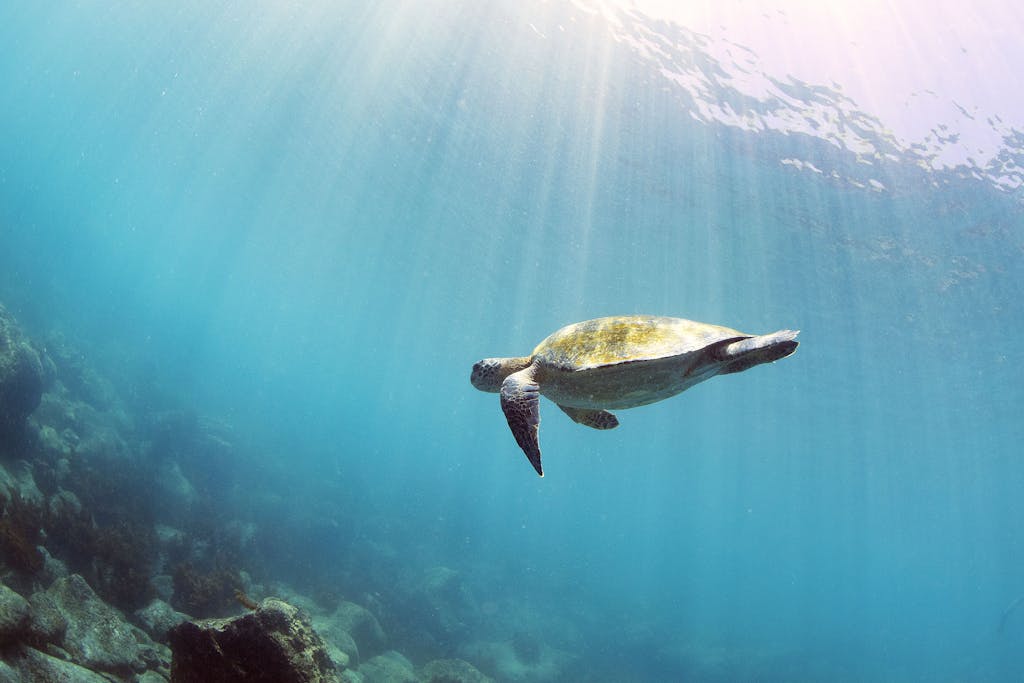
Are you ready to follow in the footsteps of Darwin and his crew? To set you on your way and to help you decide which is the best Galápagos cruise itinerary, here’s a summary of Silversea’s two Galápagos cruises — more immersive than ever, with amazing destinations and unforgettable moments to savor.
North-Central Itinerary – San Cristobal to San Cristobal: Sure to delight nature lovers and ornithologists
In a Nutshell: The first of Silversea’s two enhanced itineraries, the North-Central route from San Cristobal to San Cristobal preserves the main highlights of the original itinerary while introducing experiences that will specifically appeal to bird and nature lovers. As before, you’ll snorkel with sea turtles in Fernandina and meet the iconic Galápagos Penguin in Isabela, yet you will also have the opportunity to discover the ‘bird islands’ of Genovesa and Espanola, as well as Santa Fe island — home to an endemic iguana that cannot be found anywhere else in the world.

What You’ll See: On the iconic island of Fernandina, if conditions permit it, you’ll step ashore at Punta Mangle. It is a scenic cove surrounded by mangroves, located among the island’s lava fields. Here, while snorkeling in the rich marine environment, you might spot juvenile sharks, the famous marine iguanas feeding on algae or the Flightless Cormorant diving for prey.
If the fact that volcanic activity formed the Galápagos Islands no more than five million years ago piques your interest, you will find gratification from the discovery of Punta Moreno on Isabela Island — the archipelago’s largest island. Here, you’ll see the breathtaking Pahoehoe lava field, which lies between two active volcanoes — Sierra Negra and Cerro Azul. The terrain resembles the melted aesthetic of a surrealist painting. The rich waters of Cromwell current wash the shores. As a result, you can see the largest marine iguanas of the archipelago basking on the rocks. Snorkeling can be one of the coldest of the trip, but also one of the most rewarding experiences. You might see penguins ‘flying’ underwater, green sea turtles and marine iguanas.
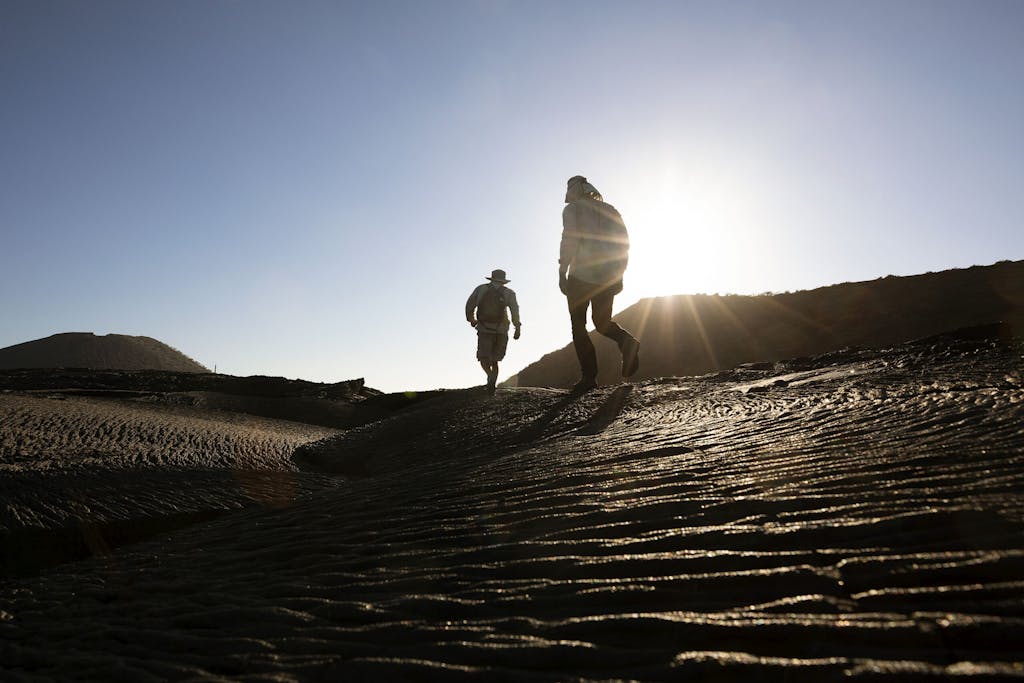
Not only will you spot many iconic bird species on Espanola, including Waved Albatrosses, Blue-Footed Boobies, Nazca Boobies, Frigatebirds and more, but you will also be able to swim with playful sea lions. Off of the white-sanded shores of Gardner Bay, you’ll have the opportunity to snorkel with large, colorful schools of tropical fish and an occasional manta ray. Whitetip reef sharks may be spotted nearer the seabed.
Genovesa, meanwhile, will offer you the chance to explore Darwin Bay, a flooded caldera. You can snorkel in an underwater wonderland that teems with life. If you feel active, climb ‘Prince Philip’s Steps,’ a steep path named after the Duke of Edinburgh who visited the island in 1965; remarkable spectacles of nesting Nazca Boobies, Great Frigatebirds with their vibrant red sacs, Red-footed Boobies and perhaps even the elusive Short-eared Owl on a daytime hunt for Storm Petrels await.
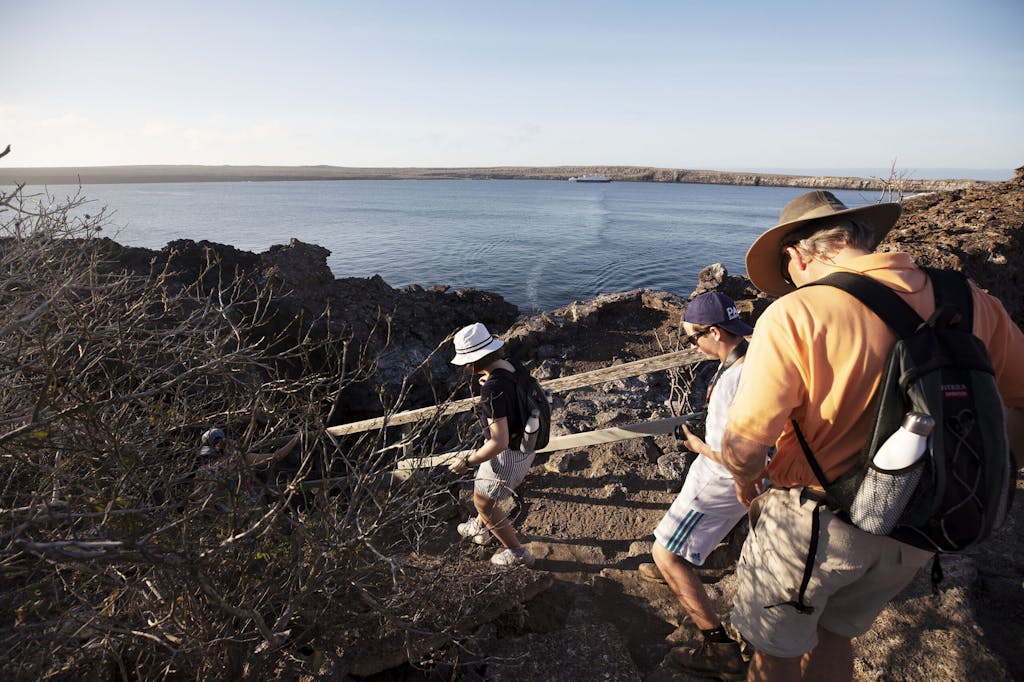
In Cerro Brujo in San Cristobal, meanwhile, you’ll see an impressive tuff cone — a stunning natural sculpture, which symbolizes the geological variety of the archipelago. The location is a favored resting place for marine birds including Blue-footed Boobies and Brown Pelicans. One of the most spectacular white-sanded beaches in the Galápagos is nearby.
Choose Your Cruise: Of Silversea’s Galápagos cruises. The North-Central itinerary is perhaps best-suited for ornithology enthusiasts, although both offer exceptional bird-spotting opportunities. Silver Origin will depart San Cristobal to embark upon this seven-day itinerary every other week, meaning you can essentially choose your own departure date. View a sample North-Central San Cristobal itinerary.
Western itinerary – San Cristobal to San Cristobal: An immersive discovery of Galápagos’ most iconic experiences
In a Nutshell: Given the geographical diversity of the Galápagos Islands and the fact that multiple ecosystems exist within this small archipelago, a multi-faceted itinerary provides the opportunity to witness a remarkable range of sights and experiences. Silversea’s Western itinerary unlocks four of the most iconic and spectacular islands in the archipelago — Isabela, Fernandina, Floreana and Bartolomé — plus Santa Cruz and Santiago. Throughout these lands, and in their surrounding waters, you’ll admire the Galápagos’ rich variety of wildlife, as well as volcanic landscapes, and you’ll learn about the region’s history of whalers and pirates. Each experience will nurture a connection with the destination, fostering a deep appreciation for the majesty of nature.

What You’ll See: As well as the previously-included islands of Santa Cruz and Santiago, you’ll visit four of the most iconic and spectacular islands in the archipelago if you opt for the revised Western itinerary. Offering an immersive dive into the quintessential Galápagos experience, including opportunities to see Galápagos sea turtles and Galápagos Penguins, Fernandina, Isabela, Floreana and Bartolome await — each a treasure trove of discovery for the curious traveler.
Bartolome is perhaps the most photographed island in the Galápagos as it boasts some of the most magnificent landscapes in the region, including the famous Pinnacle Rock — a towering obelisk at the edge of the ocean. If you feel inclined, go snorkeling or take a walk along the beach to look for the Galápagos Penguin, likely found perched on a rock or zooming through the water.
The youngest island in the Galápagos, Fernandina is among the most pristine islands in the world and hosts an impressive array of wildlife, including colorful Sally Lightfoot crabs and the rare endemic Flightless Cormorant. On the lava-forged coast of Punta Espinoza, you’ll see hundreds of marine iguanas resting on black-hued rocks. In the distance sits La Cumbre volcano, symbolizing the volcanic origin of the island and providing context to the lava-forged terrain. Tagus Cove is another site that conveys the islands’ rich history, named after the British ship HMS Tagus which sailed here in 1814. Keep an eye out for messages on the rocks here, supposedly painted by sailors passing through in the early- to mid-nineteenth century — a practice that has long since ceased, of course.
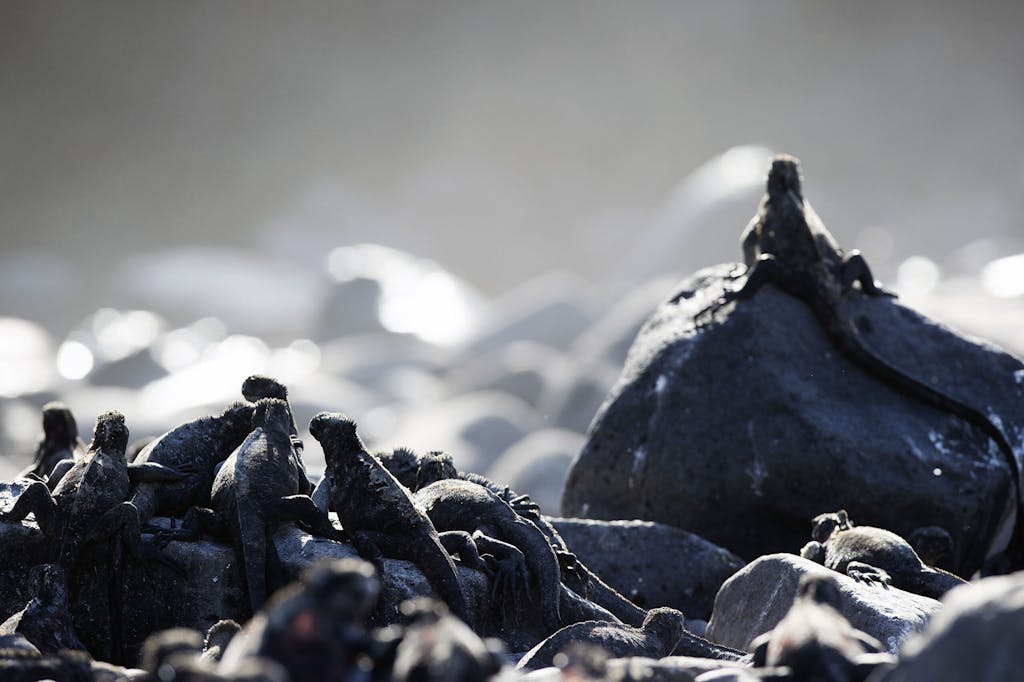
Isabela is the largest of all islands in the Galápagos. It is characterized by five vast volcanoes, including the imposing Volćan Sierra Negra, the second-largest caldera in the world. Named after Vicente Ramon Roca, President of Ecuador from 1845-49, Punta Vicente Roca is another highlight of the voyage. Here, you might admire captivating geological formations, underwater caves, and lava tubes. If chance favors you, you may even see Pacific green turtles, sharks, rays, whales, dolphins, and the nearby colony of fur seals.
Isabela is the largest of all islands in the Galápagos. It is characterized by five vast volcanoes, including the imposing Volćan Sierra Negra, the second-largest caldera in the world. Named after Vicente Ramon Roca, President of Ecuador from 1845-49, Punta Vicente Roca is another highlight of the voyage. Here, you might admire captivating geological formations, underwater caves and lava tubes. If chance favors you, you may even see Pacific green turtles, sharks, rays, whales, dolphins and the nearby colony of fur seals.
The beautiful island of Floreana has been luring visitors since the 18th century when whalers hunted the island for tortoises and pirates sought shelter in its caves. Sailors established a simple mailing system that is still in use today: they would drop letters in a box, hoping they would be delivered by other mariners sailing home. You can continue the tradition during your visit to Floreana if you choose.
Bahia Borrero on Santa Cruz, another new destination for Silversea, is a beautiful white coralline beach, used as a nesting site by green sea turtles. The peaceful oasis offers a relaxing spot in which to unwind before concluding the voyage in San Cristobal on the following day. Behind the bordering dunes exists a forest of typical vegetation: palo santo, leather leaf and salty bushes. Yellow Warblers and various species of Darwin Finches, including the Common Cactus Finch or the Small Ground Finch, inhabit the forest’s flora. Each chirp echoes the theory of evolution, which the birds went some way in inspiring.
Choose Your Cruise: To discover the Galápagos’ most iconic islands, and witness the Theory of Evolution in action, embark upon Silver Origin’s Western itinerary. This seven-day voyage sets sail every other week. View a sample Western itinerary.
Back-to-back Galápagos sailings
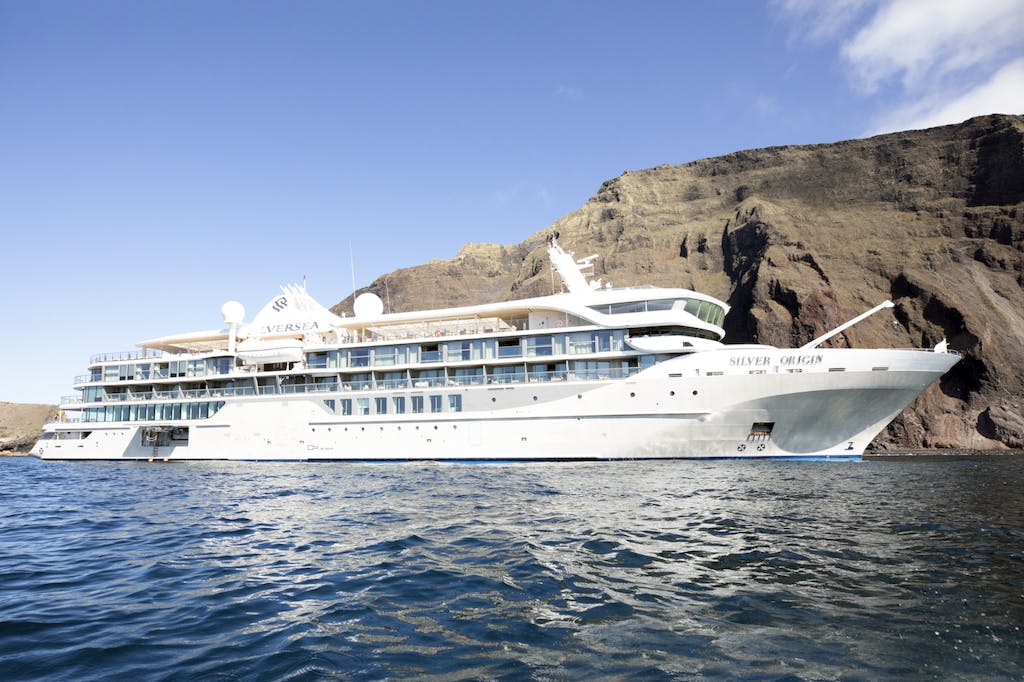
While this summary of Silversea’s Galápagos cruises is designed to showcase the highlight experiences on offer on each itinerary, it is by no means exhaustive. You really need to embark on Silver Origin to develop an appreciation for the lands that time forgot, as every experience in this remarkable archipelago is unique. And if choosing one of the two available itineraries is too daunting a task, there is a third option to consider: embarking on both voyages back-to-back. Aside from getting a full Galápagos immersion over a two-week period, there is the added bonus of a discount on your total fare. You’re sure to return with a renewed take on the natural beauty of our planet.
On a roll? Read these five Galápagos photography tips for underwater photos.



